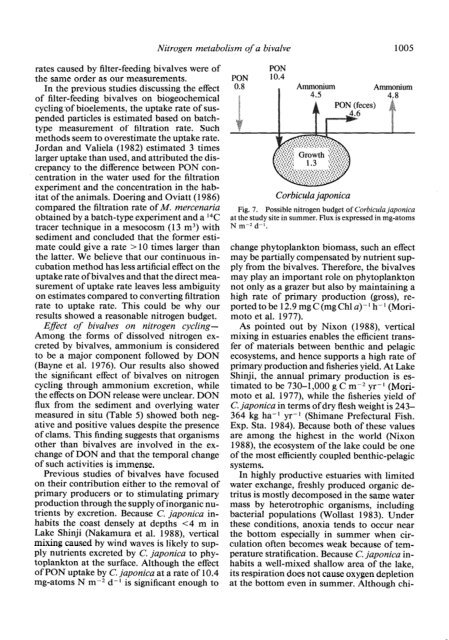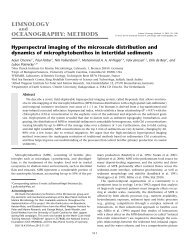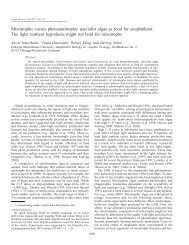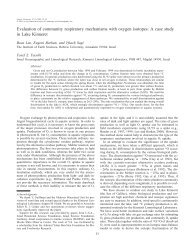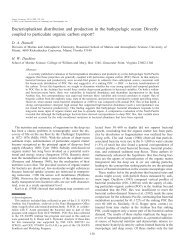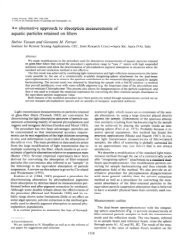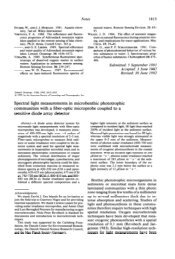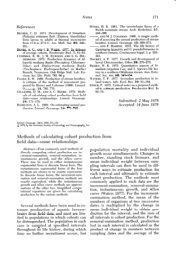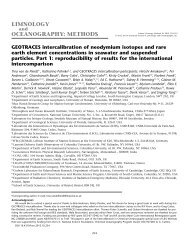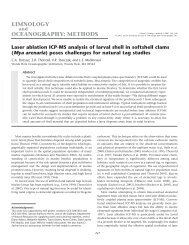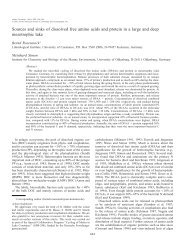Download - ASLO
Download - ASLO
Download - ASLO
Create successful ePaper yourself
Turn your PDF publications into a flip-book with our unique Google optimized e-Paper software.
Nitrogen metabolism of a bivalve 1005<br />
rates caused by filter-feeding bivalves were of<br />
the same order as our measurements.<br />
In the previous studies discussing the effect<br />
of filter-feeding bivalves on biogeochemical<br />
cycling .of bioelements, the uptake rate of suspended<br />
particles is estimated based on batchtype<br />
measurement of filtration rate. Such<br />
methods seem to overestimate the uptake rate.<br />
Jordan and Valiela (1982) estimated 3 times<br />
larger uptake than used, and attributed the discrepancy<br />
to the difference between PON concentration<br />
in the water used for the filtration<br />
experiment and the concentration in the habitat<br />
of the animals. Doering and Oviatt (1986)<br />
compared the filtration rate of hf. mercenaria<br />
obtained by a batch-type experiment and a 14C<br />
tracer technique in a mesocosm (13 m3) with<br />
sediment and concluded that the former estimate<br />
could give a rate > 10 times larger than<br />
the latter. We believe that our continuous incubation<br />
method has less artificial effect on the<br />
uptake rate of bivalves and that the direct measurement<br />
of uptake rate leaves less ambiguity<br />
on estimates compared to converting filtration<br />
rate to uptake rate. This could be why our<br />
results showed a reasonable nitrogen budget.<br />
Efect of bivalves on nitrogen cycling-<br />
Among the forms of dissolved nitrogen excreted<br />
by bivalves, ammonium is considered<br />
to be a major component followed by DON<br />
(Bayne et al. 1976). Our results also showed<br />
the significant effect of bivalves on nitrogen<br />
cycling through ammonium excretion, while<br />
the effects on DON release were unclear. DON<br />
flux from the sediment and overlying water<br />
measured in situ (Table 5) showed both negative<br />
and positive values despite the presence<br />
of clams. This finding suggests that organisms<br />
other than bivalves are involved in the exchange<br />
of DON and that the temporal change<br />
of such activities is immense.<br />
Previous studies of bivalves have focused<br />
on their contribution either to the removal of<br />
primary producers or to stimulating primary<br />
production through the supply of inorganic nutrients<br />
by excretion. Because C. japonica inhabits<br />
the coast densely at depths


